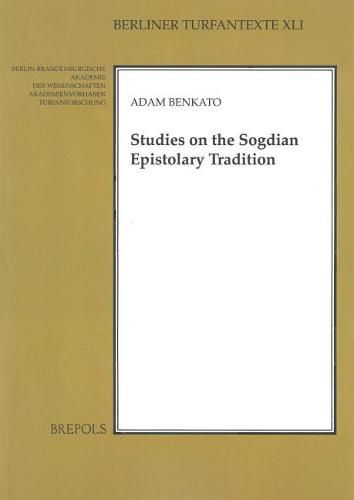Readings Newsletter
Become a Readings Member to make your shopping experience even easier.
Sign in or sign up for free!
You’re not far away from qualifying for FREE standard shipping within Australia
You’ve qualified for FREE standard shipping within Australia
The cart is loading…






An important part of the Sogdian corpora which have come down to us are epistolary texts: both the earliest substantial Sogdian documents (the ‘Ancient Letters’) and the only substantial textual corpus found in Sogdiana itself (the Mugh documents). The Turfan collections of (especially) Berlin, Kyoto, and St. Petersburg, also preserve a number of letter fragments. Altogether, these texts attest different phases of a Sogdian epistographical tradition stretching over some seven centuries. The edition and analysis of both well-preserved and fragmentary texts can contribute to efforts to reconstruct parts of those traditions–and eventually connect them with those of Central Asia and Iran more broadly. The first part of this work is an effort to present a comprehensive edition of the Sogdian epistolary fragments in the Turfan collections of Berlin, Kyoto, and St. Petersburg. In the second part a comparative study of Sogdian epistolography is undertaken, based on the editions made in the first part, together with previously published work on other Sogdian epistolary corpora, including studies of layout, external addresses, and stamps.
$9.00 standard shipping within Australia
FREE standard shipping within Australia for orders over $100.00
Express & International shipping calculated at checkout
An important part of the Sogdian corpora which have come down to us are epistolary texts: both the earliest substantial Sogdian documents (the ‘Ancient Letters’) and the only substantial textual corpus found in Sogdiana itself (the Mugh documents). The Turfan collections of (especially) Berlin, Kyoto, and St. Petersburg, also preserve a number of letter fragments. Altogether, these texts attest different phases of a Sogdian epistographical tradition stretching over some seven centuries. The edition and analysis of both well-preserved and fragmentary texts can contribute to efforts to reconstruct parts of those traditions–and eventually connect them with those of Central Asia and Iran more broadly. The first part of this work is an effort to present a comprehensive edition of the Sogdian epistolary fragments in the Turfan collections of Berlin, Kyoto, and St. Petersburg. In the second part a comparative study of Sogdian epistolography is undertaken, based on the editions made in the first part, together with previously published work on other Sogdian epistolary corpora, including studies of layout, external addresses, and stamps.